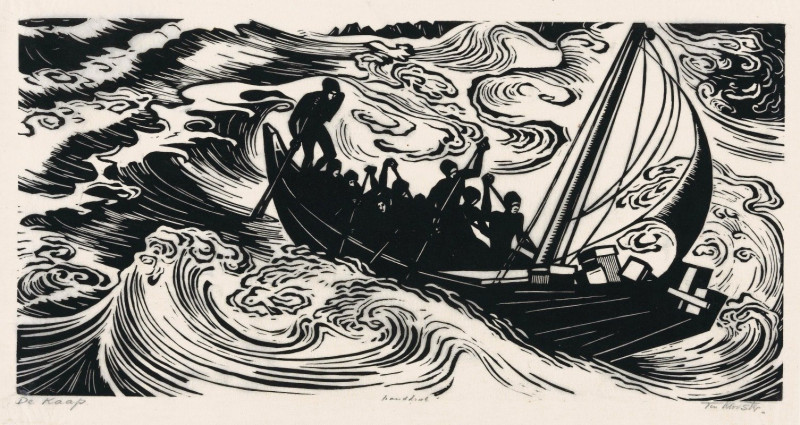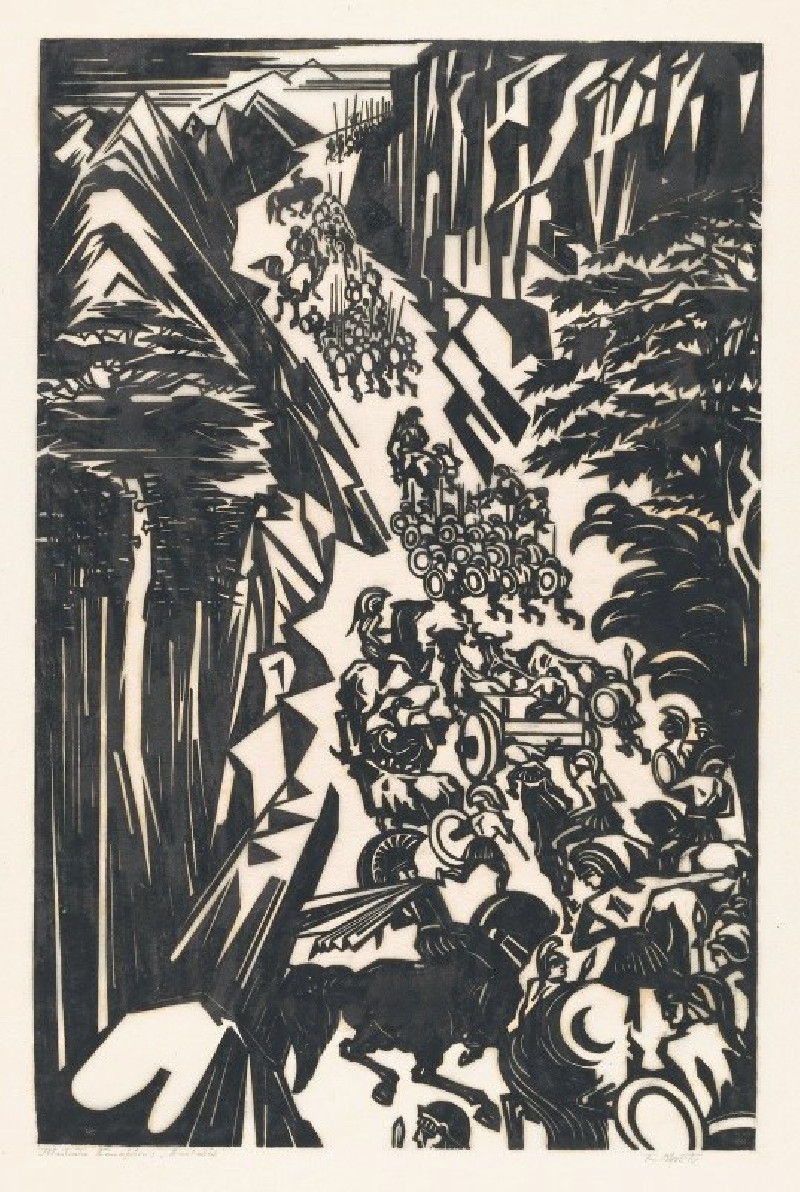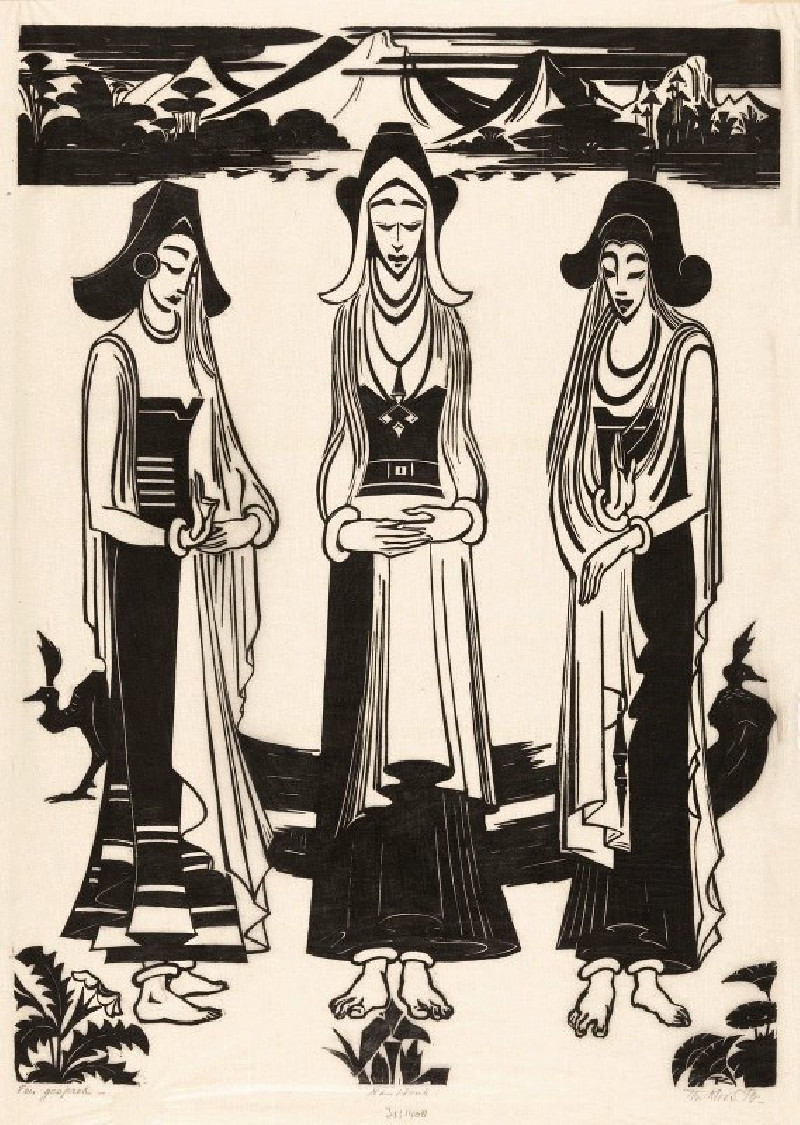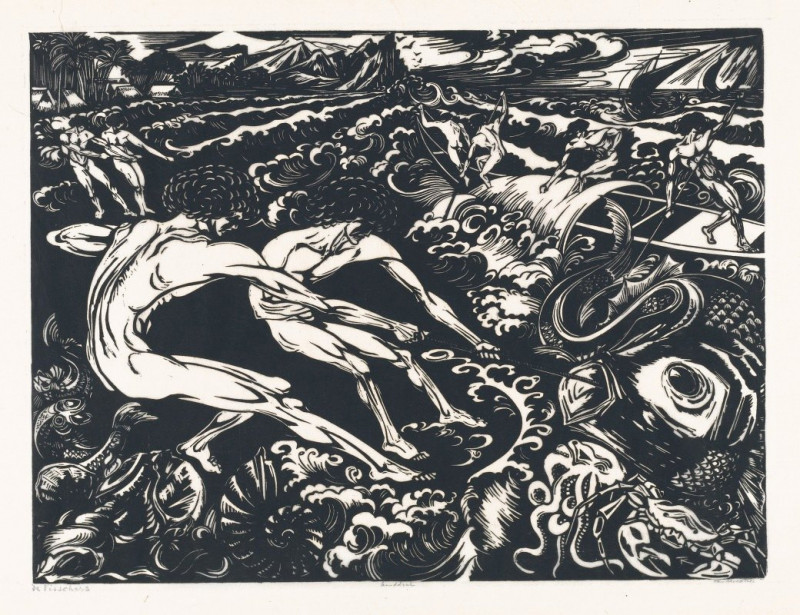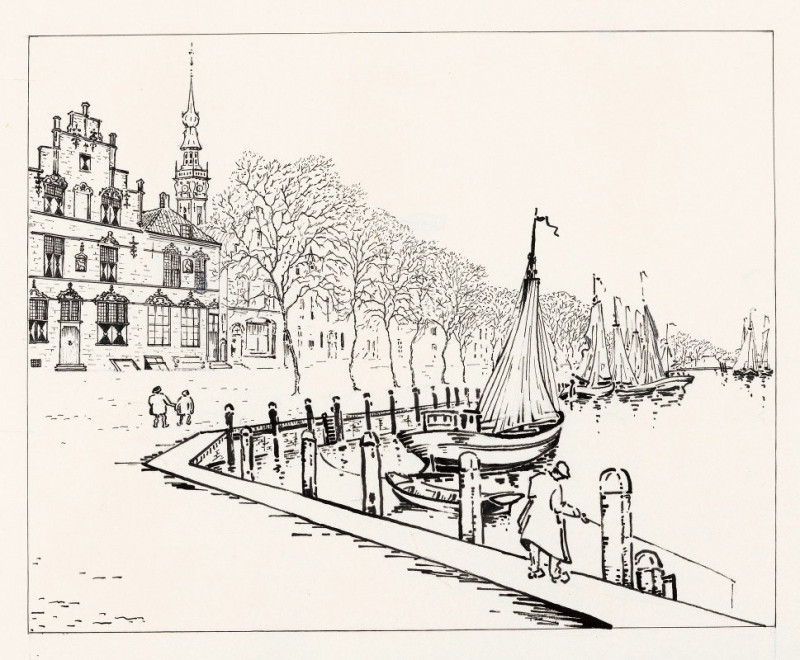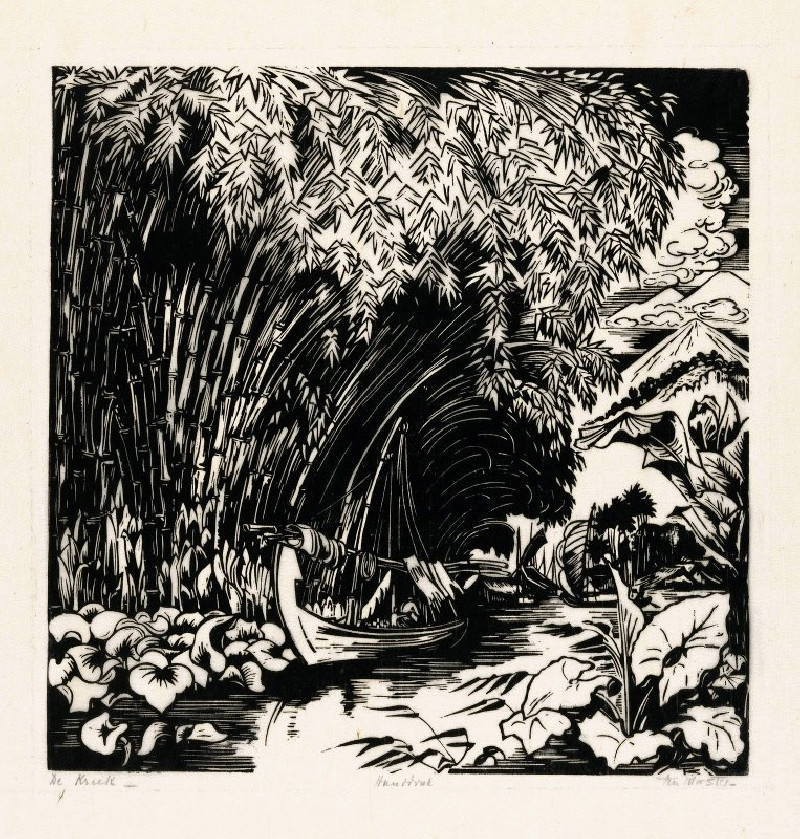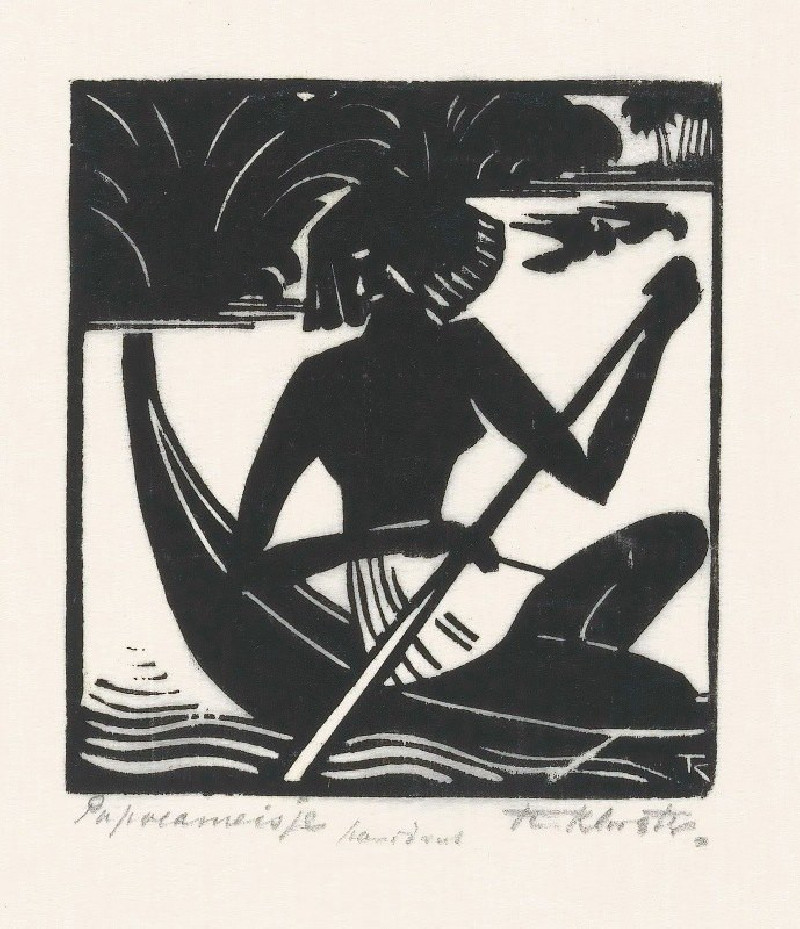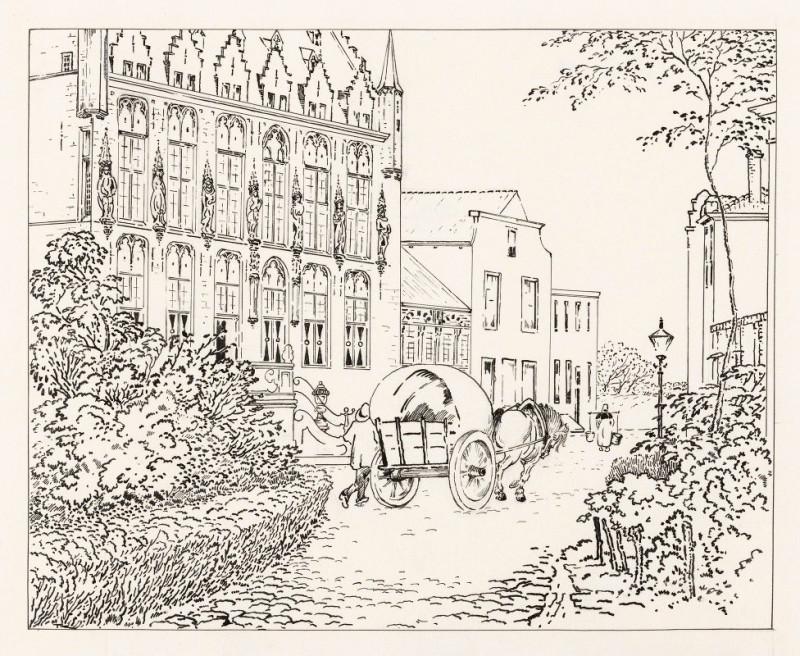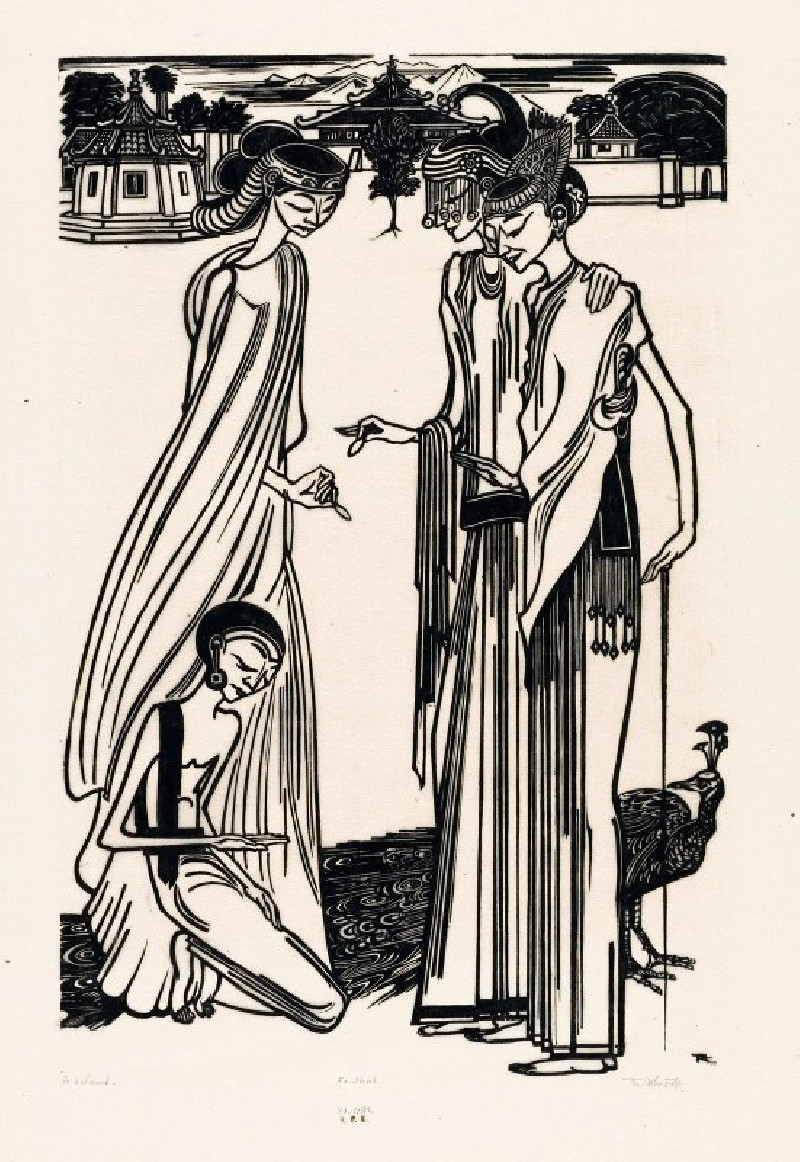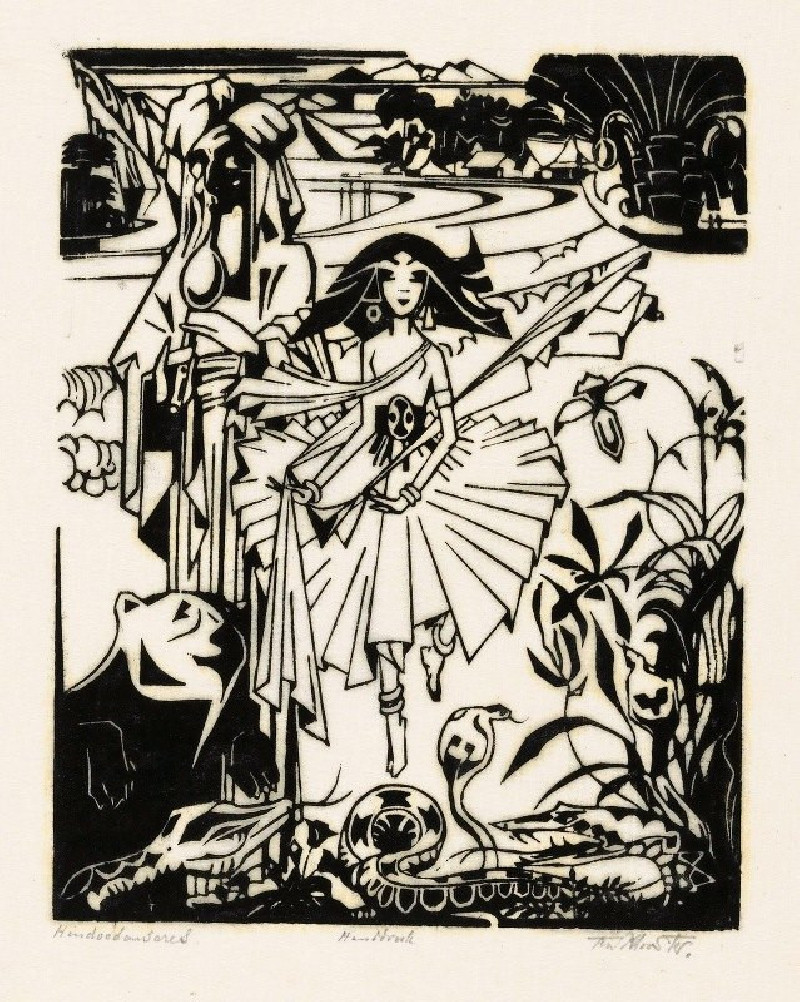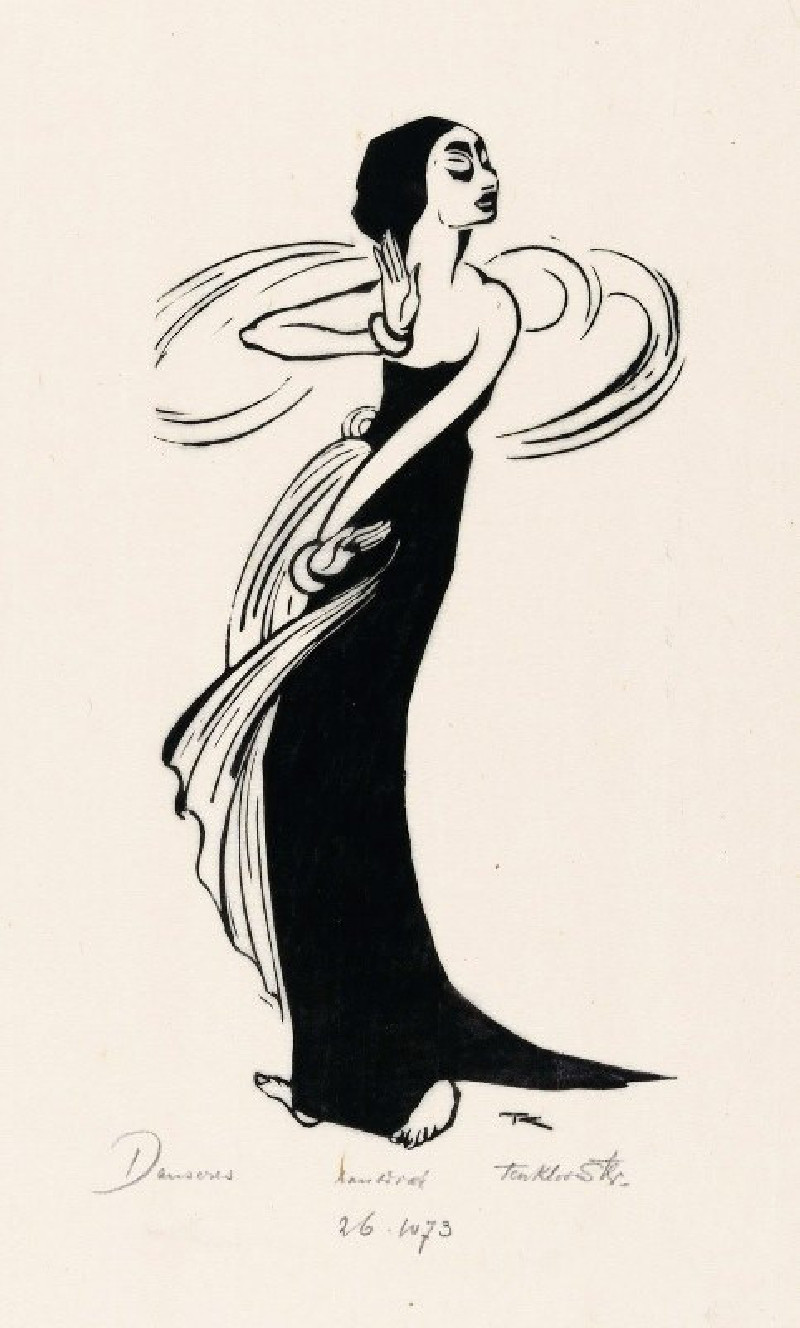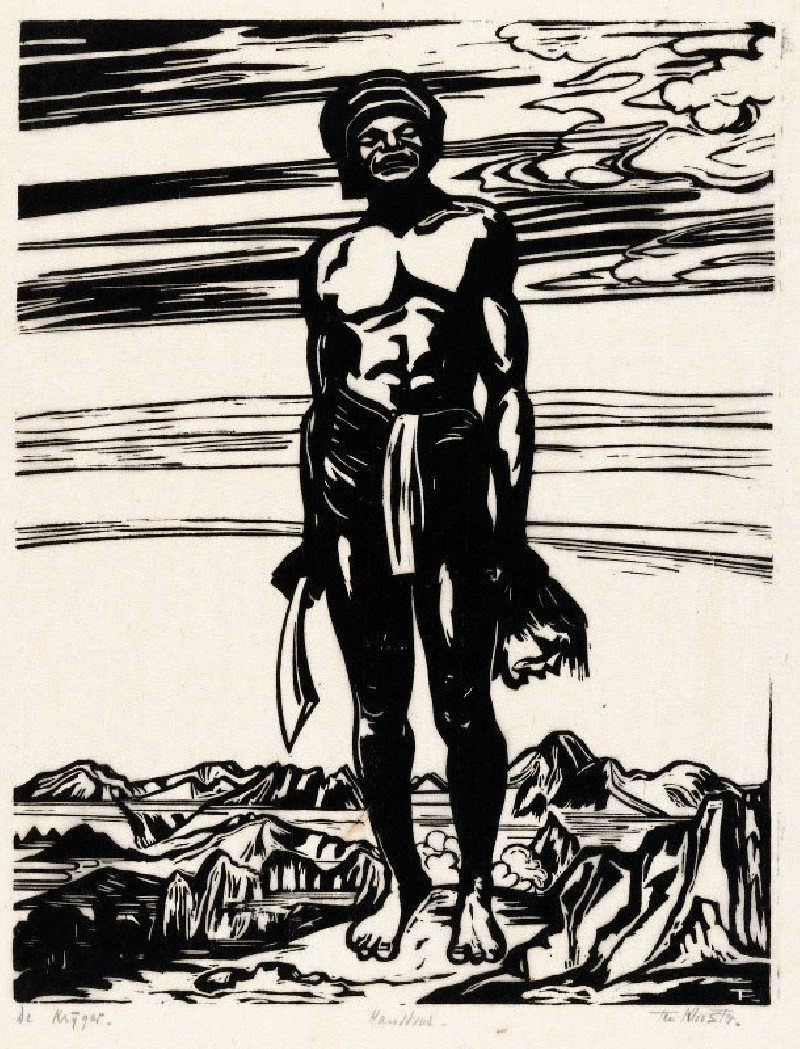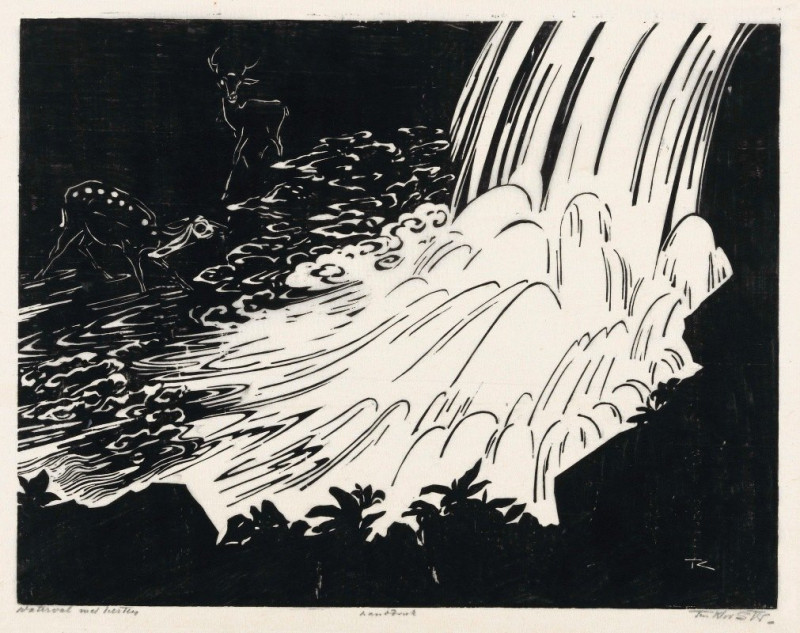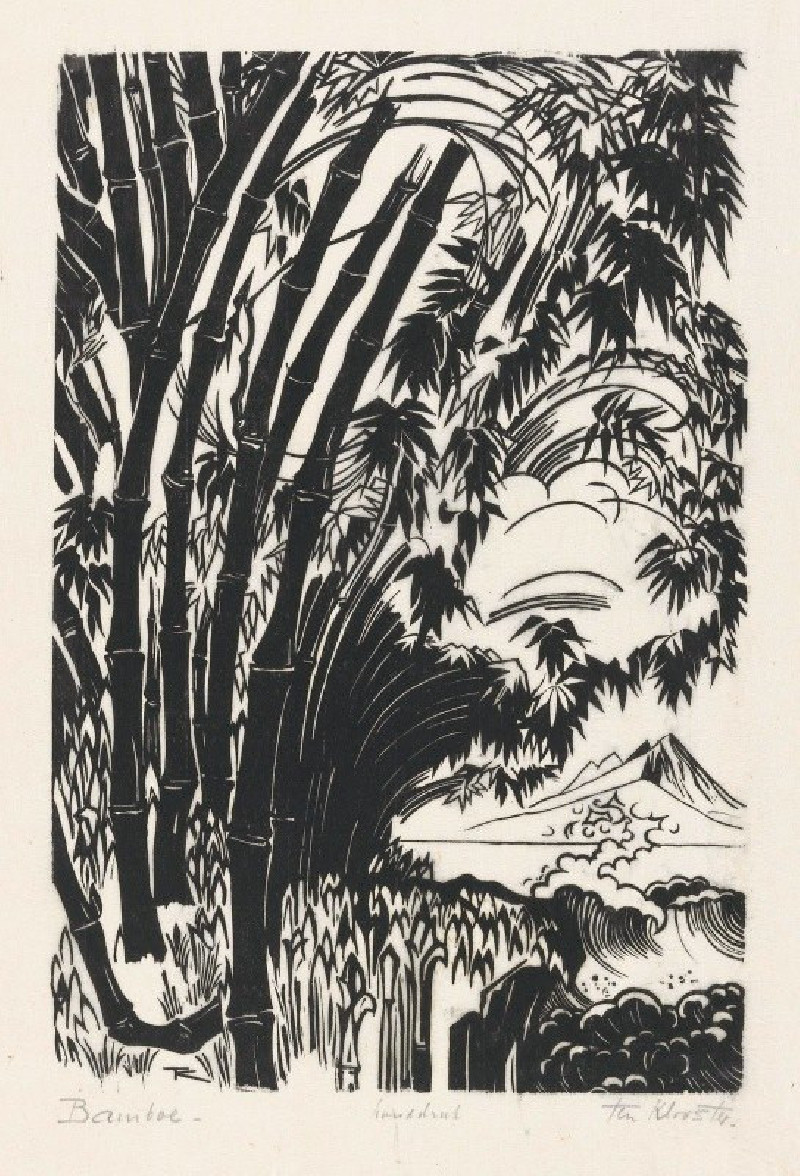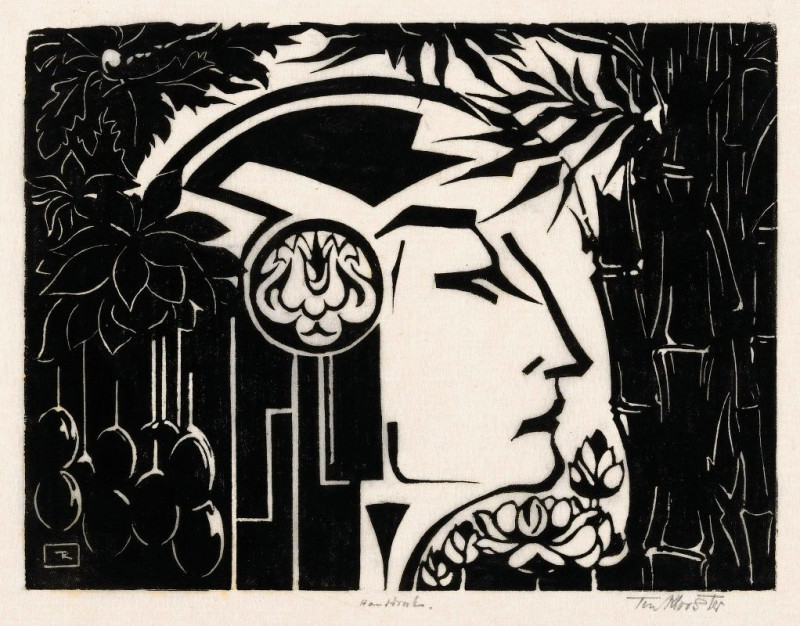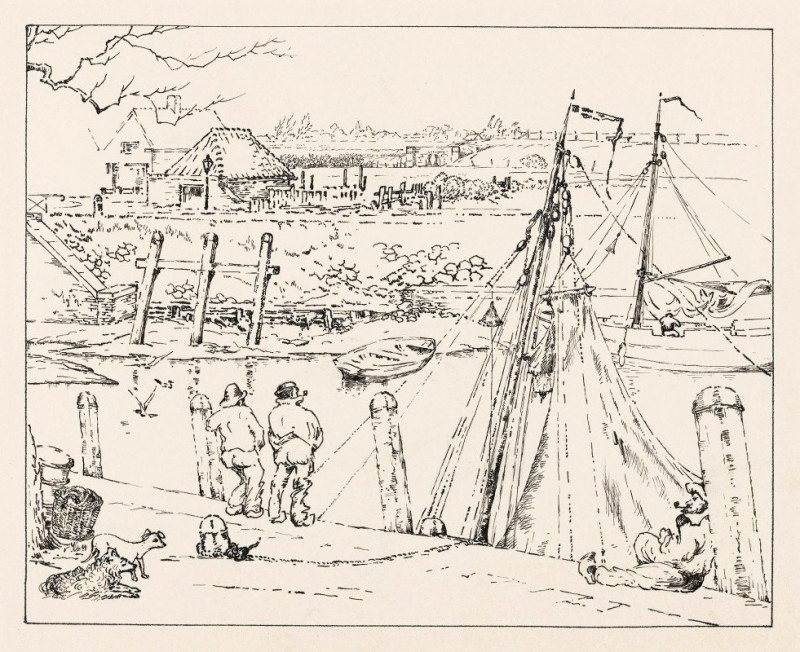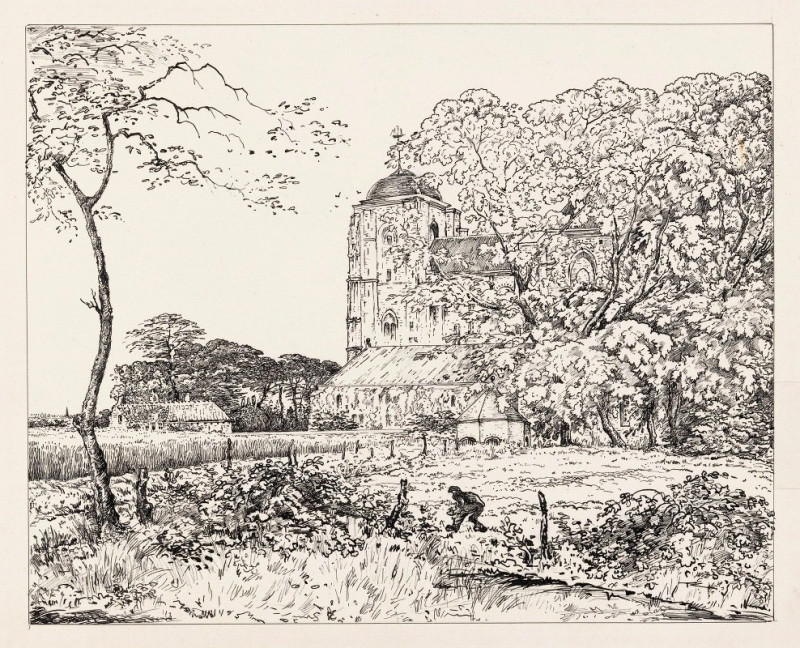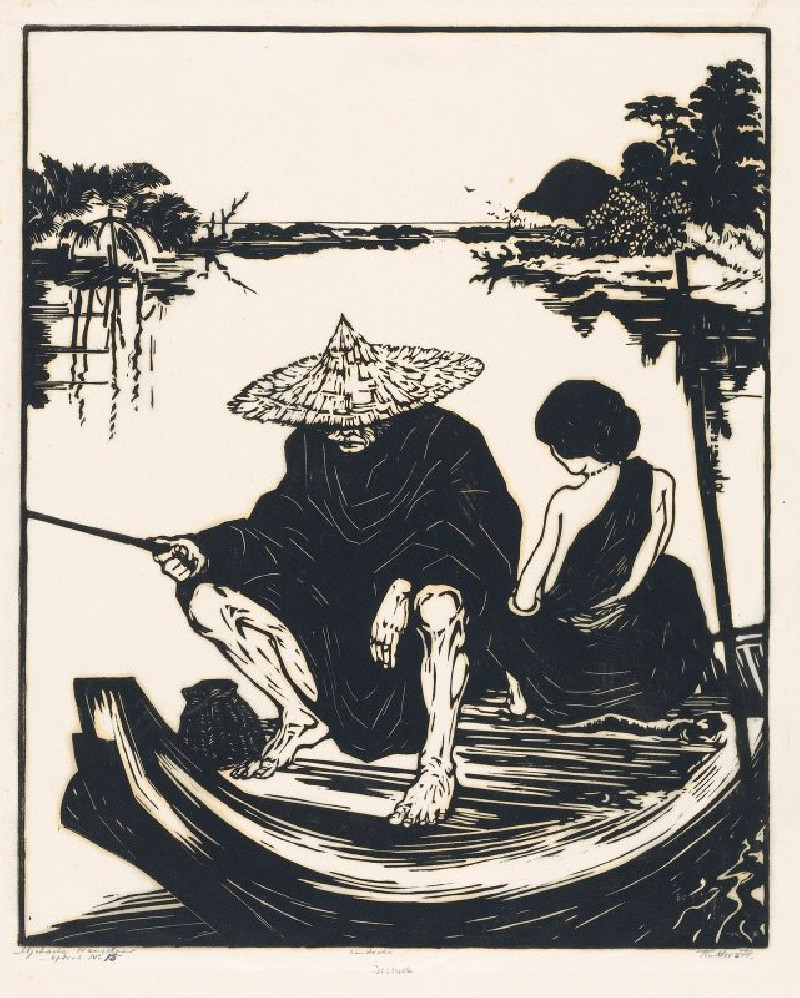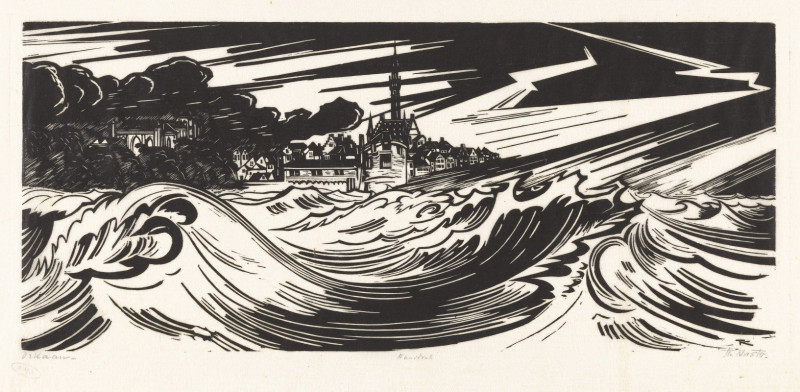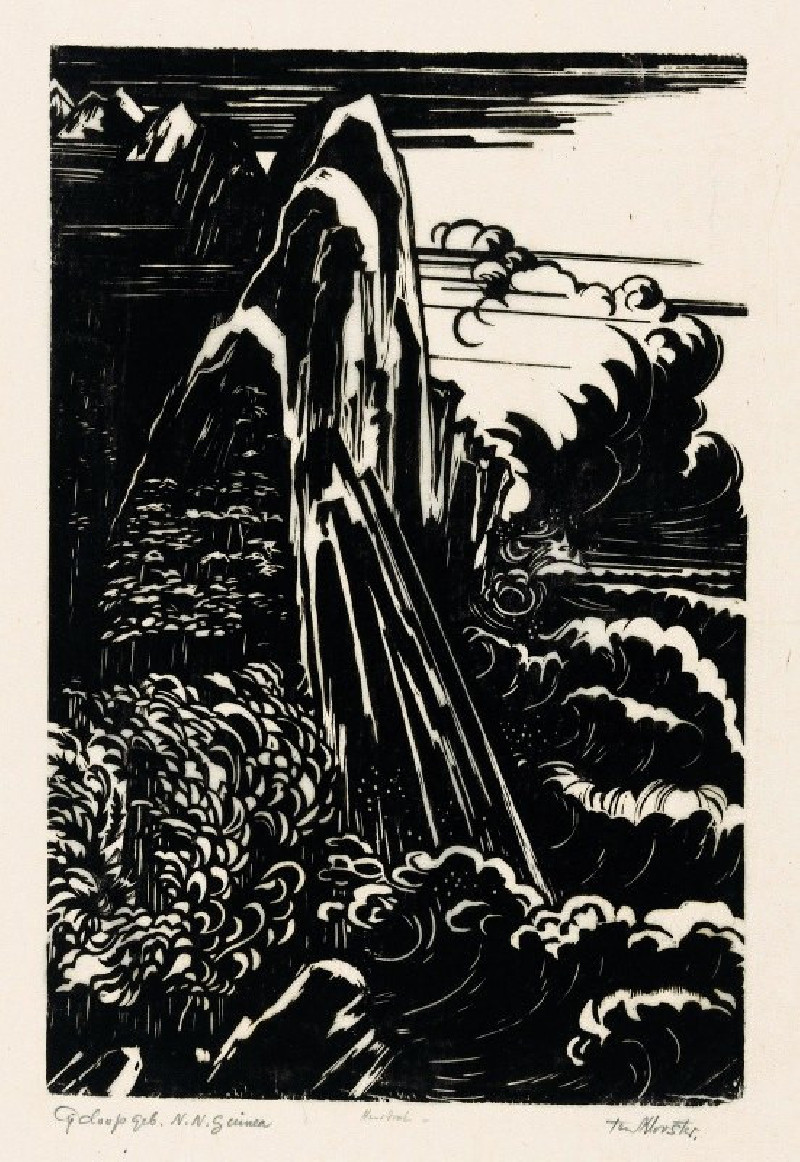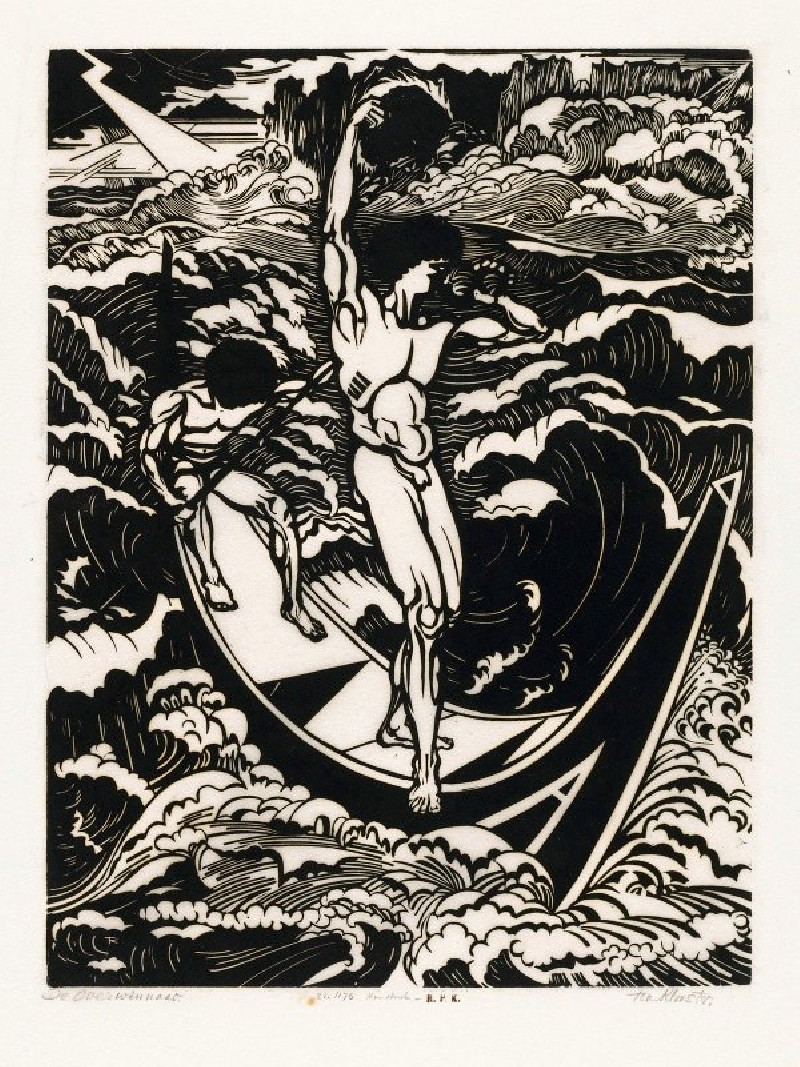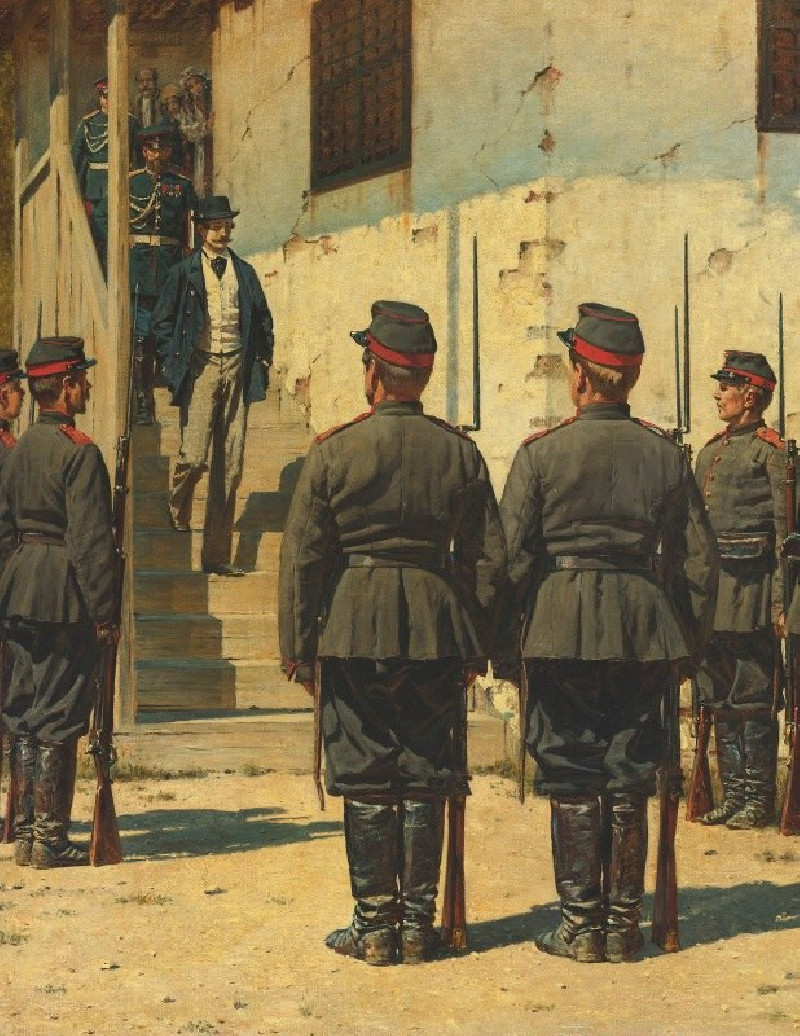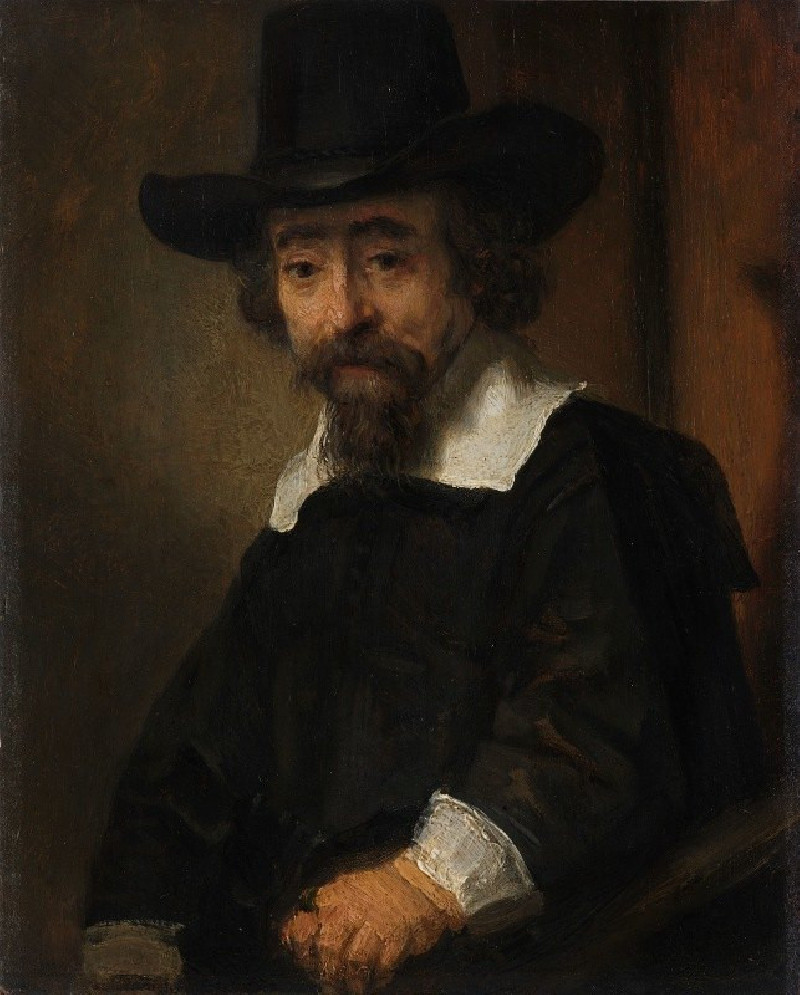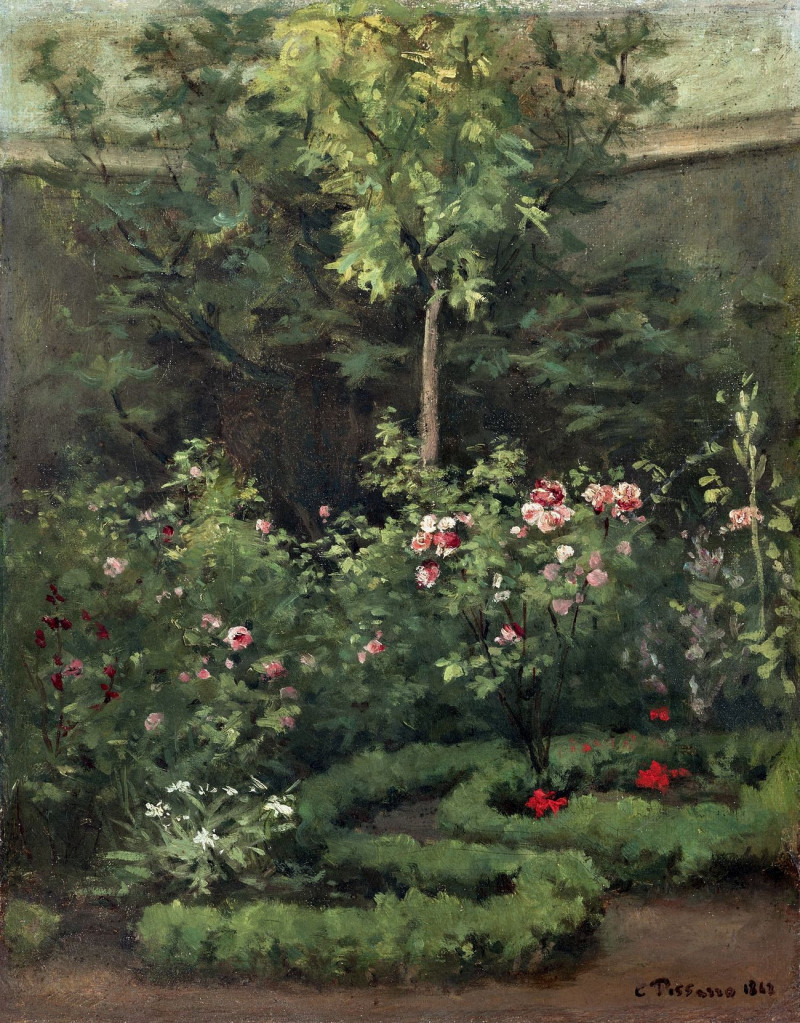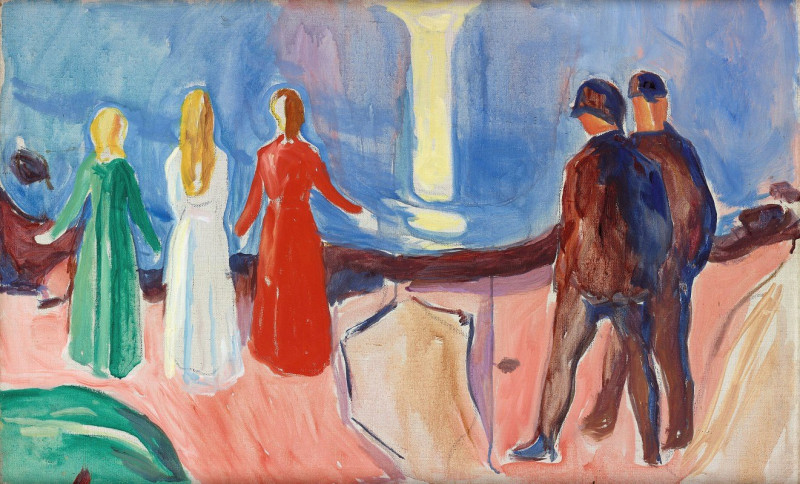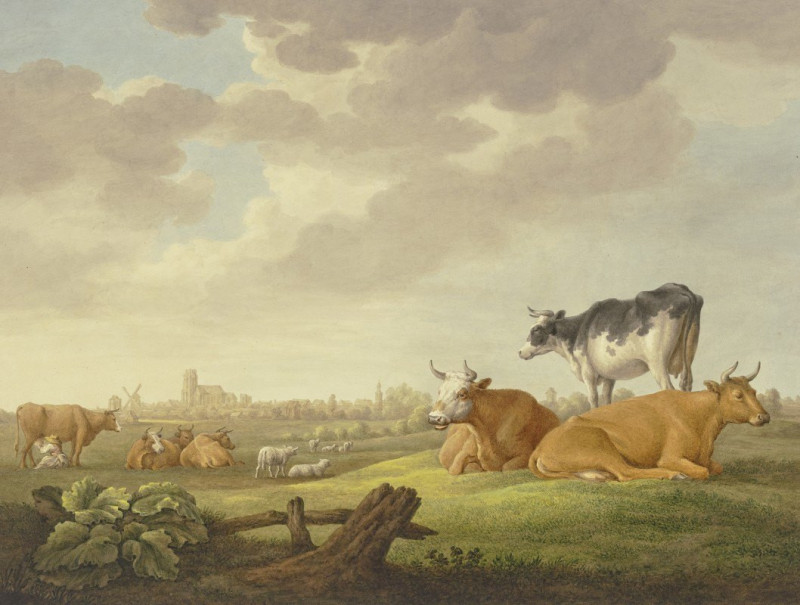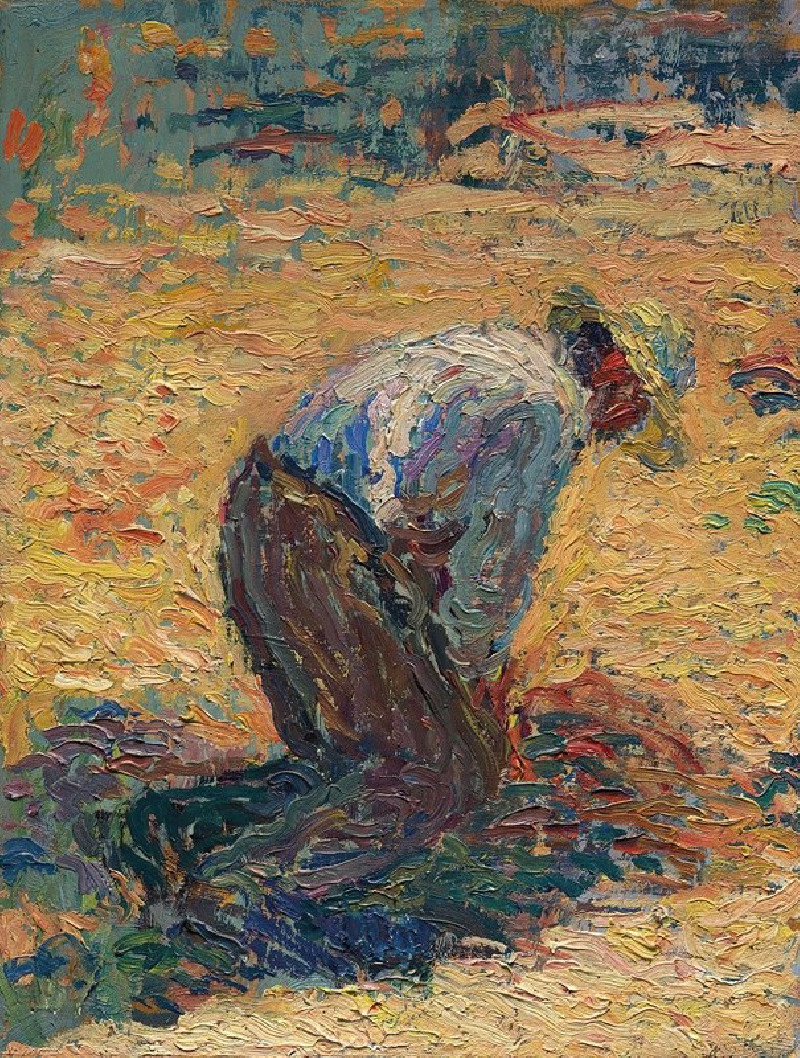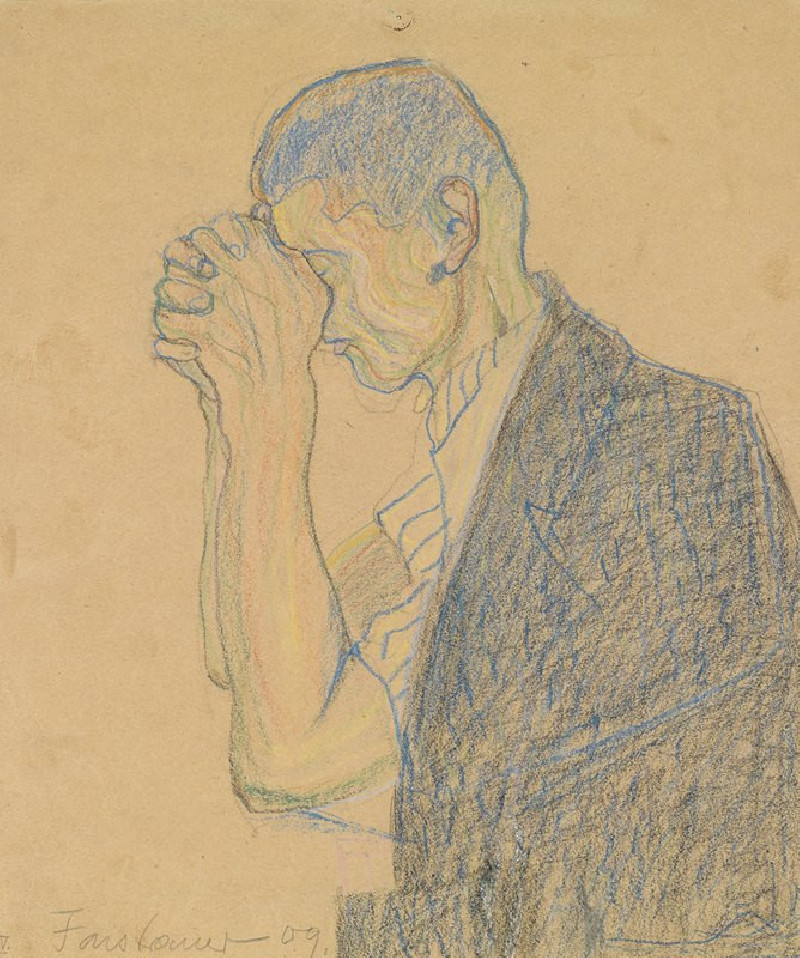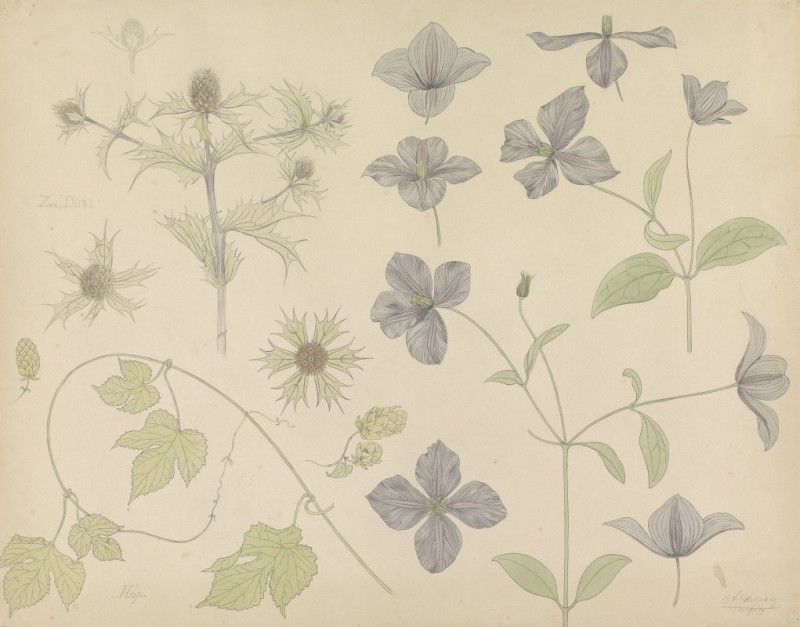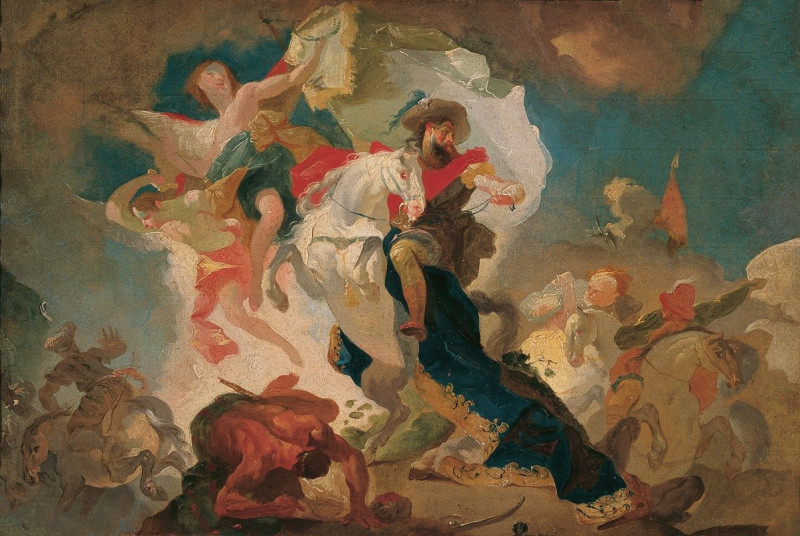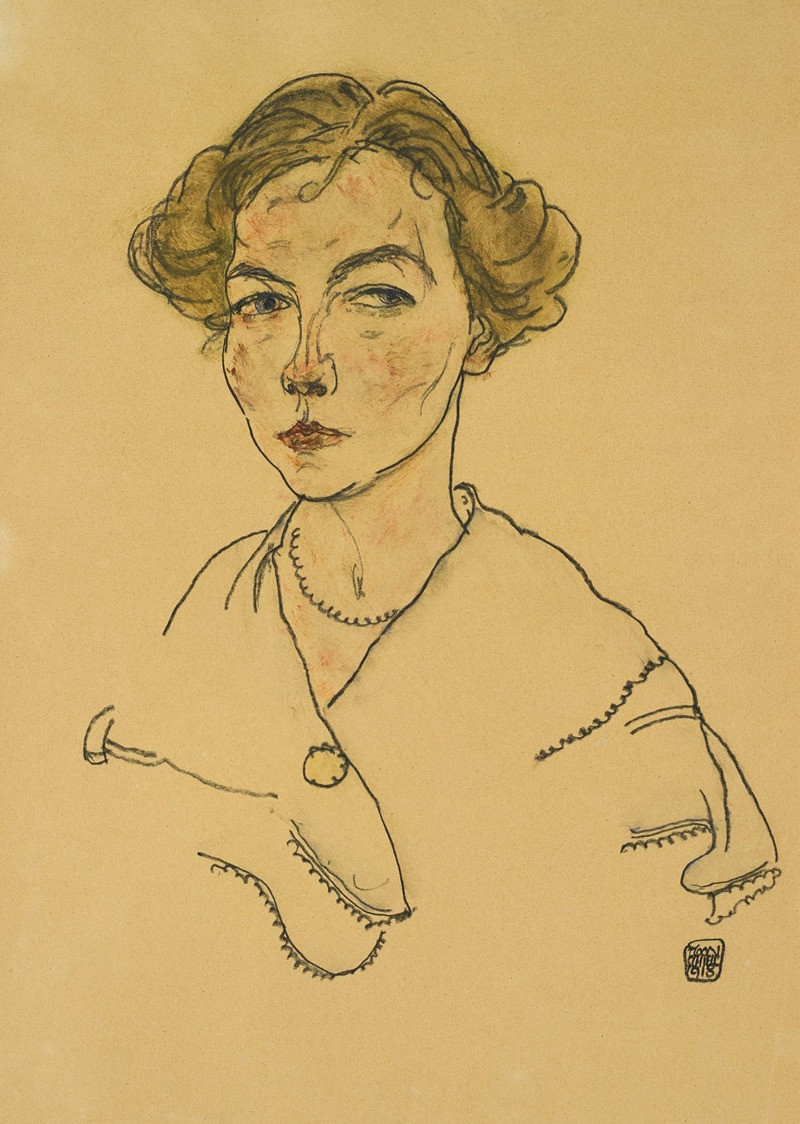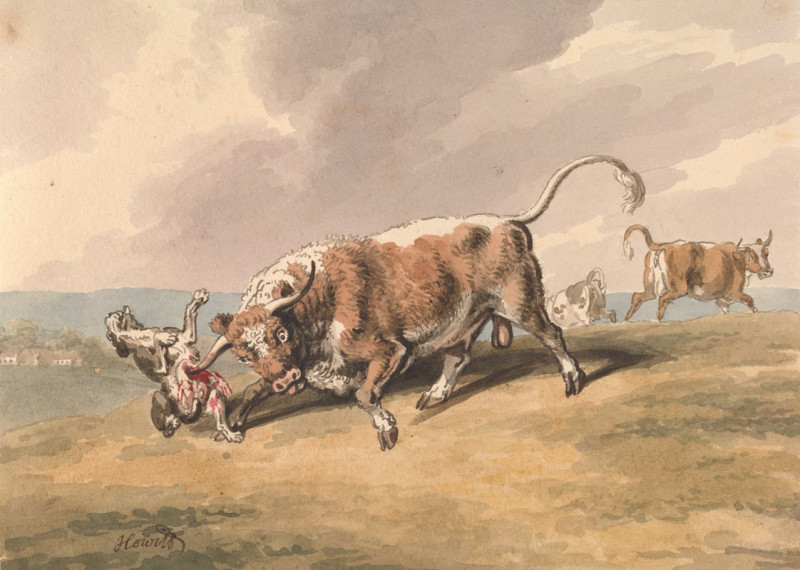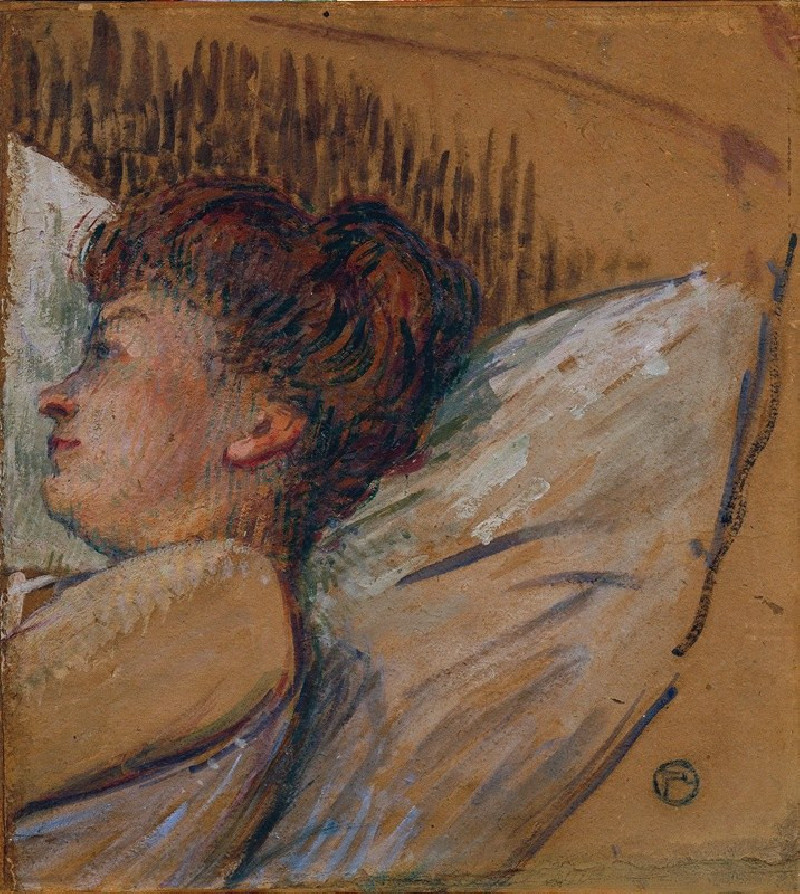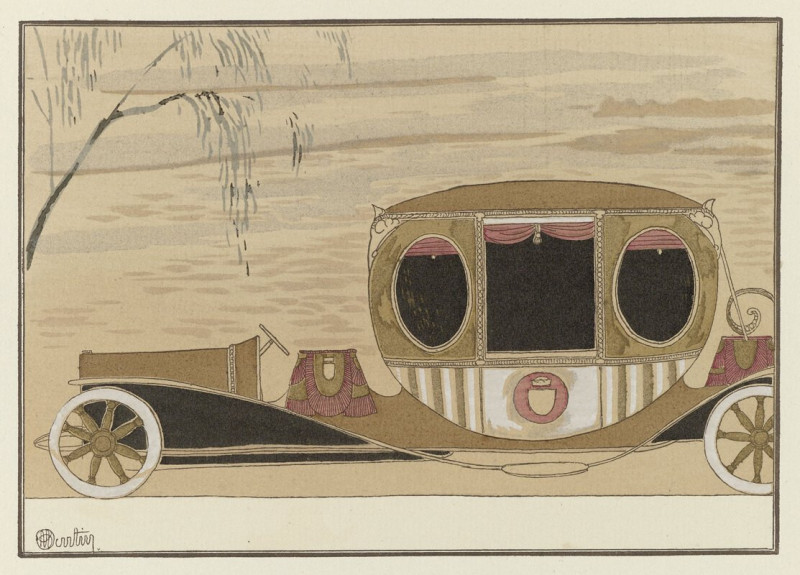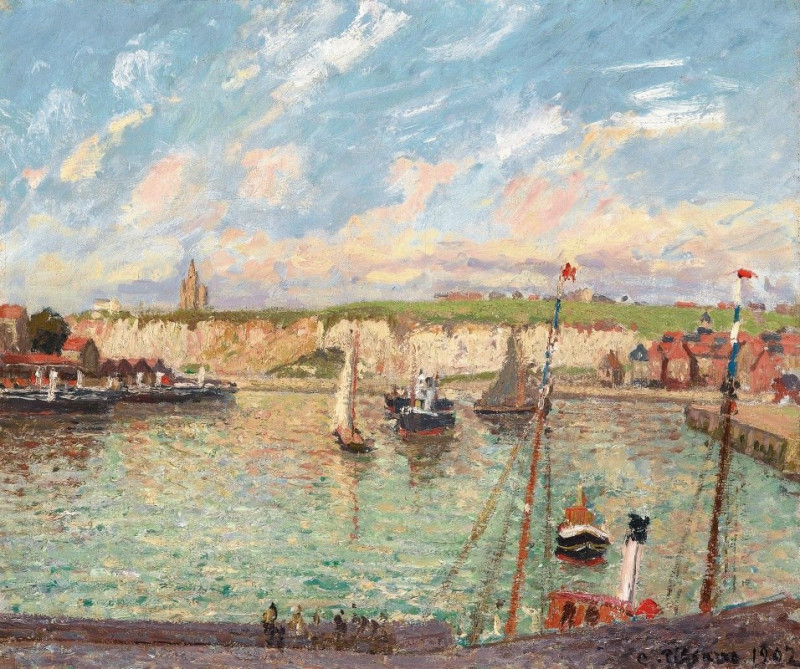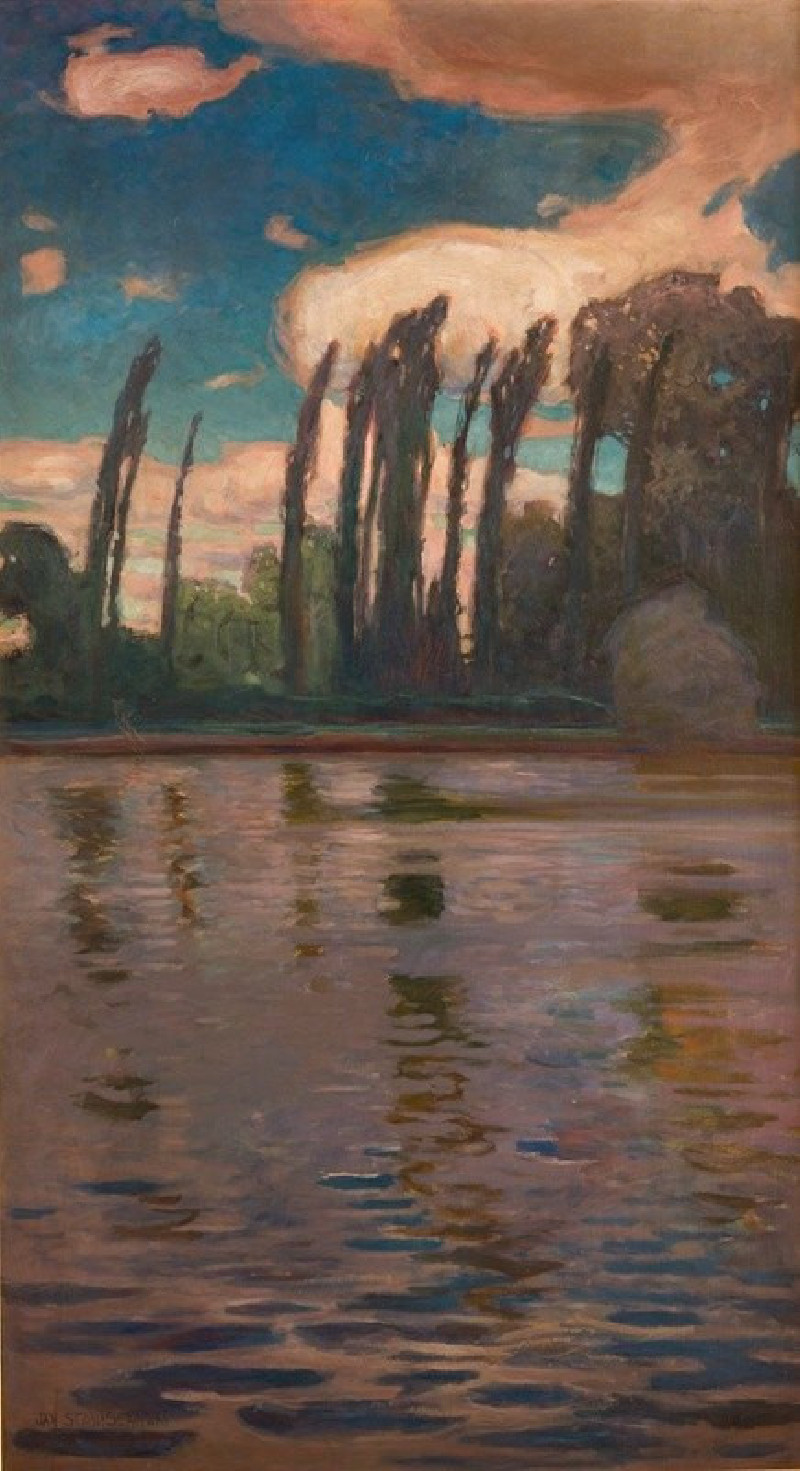De kaap (1927)
Technique: Giclée quality print
Recommended by our customers
More about this artwork
Johannes Frederik Engelbert ten Klooster’s 1927 woodcut "De kaap" is a dramatic and compelling work that captures the raw power of the sea and the resilience of those who navigate its waters. This stark black-and-white piece portrays a group of sailors aboard a small, tilted boat, vigorously struggling against the surging, tumultuous waves that threaten to engulf them. The dynamic composition of swirling sea patterns around the boat highlights the tempestuous nature of the ocean, while the sailors' varied postures and expressions convey a narrative of urgent cooperation and enduring human spirit in the face of natural adversity.The high contrast and fluid, bold lines typical of woodcut techniques amplify the visual impact of the scene, enhancing the elemental struggle between man and nature. "De kaap" serves not only as a testament to ten Klooster’s mastery of the woodcut medium but also as a timeless reflection on the courage and collective effort found in moments of critical challenge.
Delivery
Returns
Johan Frederik Engelbert ten Klooster was a Dutch graphic designer and painter of Javanese-Dutch origin.
He lived and worked in Java and Sumatra, in New Guinea, in The Hague (approx 1914-1915) and in Veere from May 1915. He was an officer with the KNIL, but after 1915 a full time artist.

